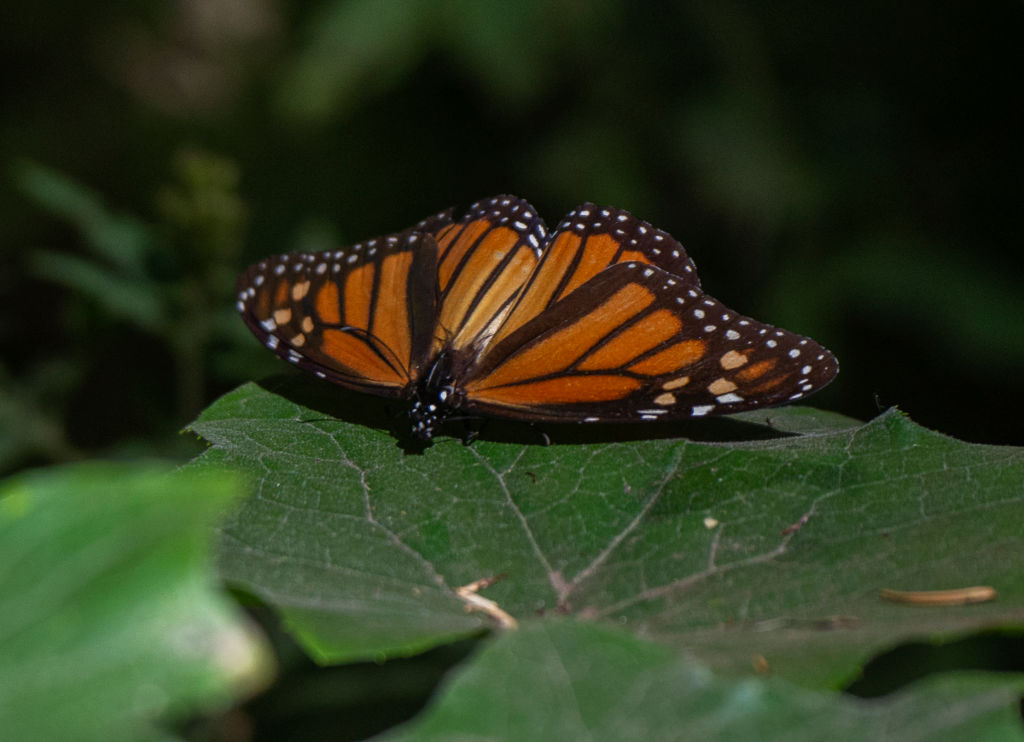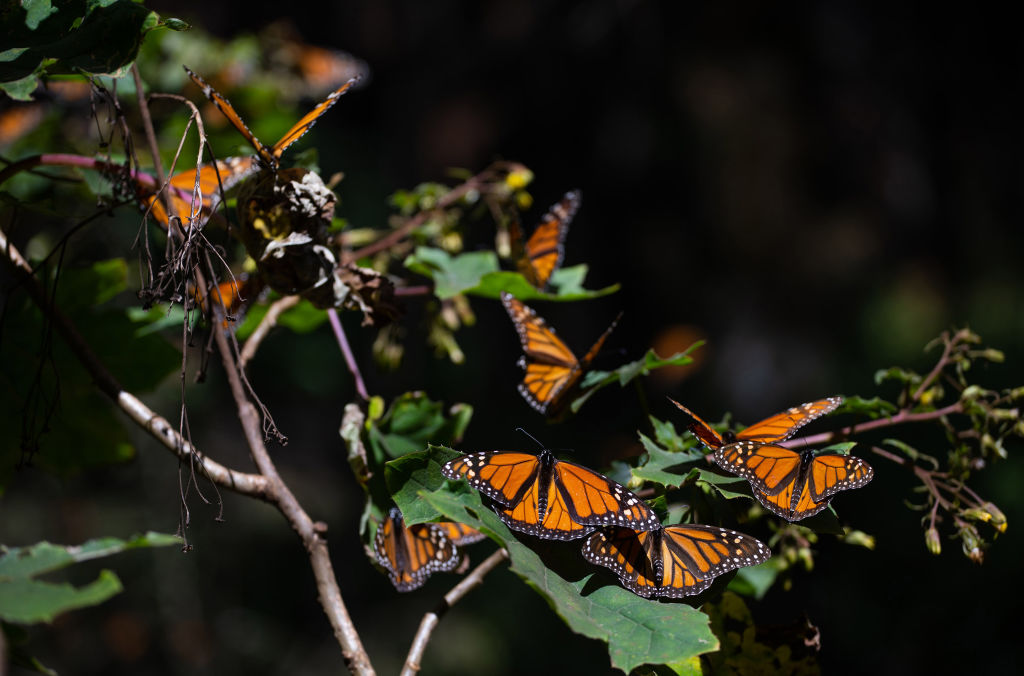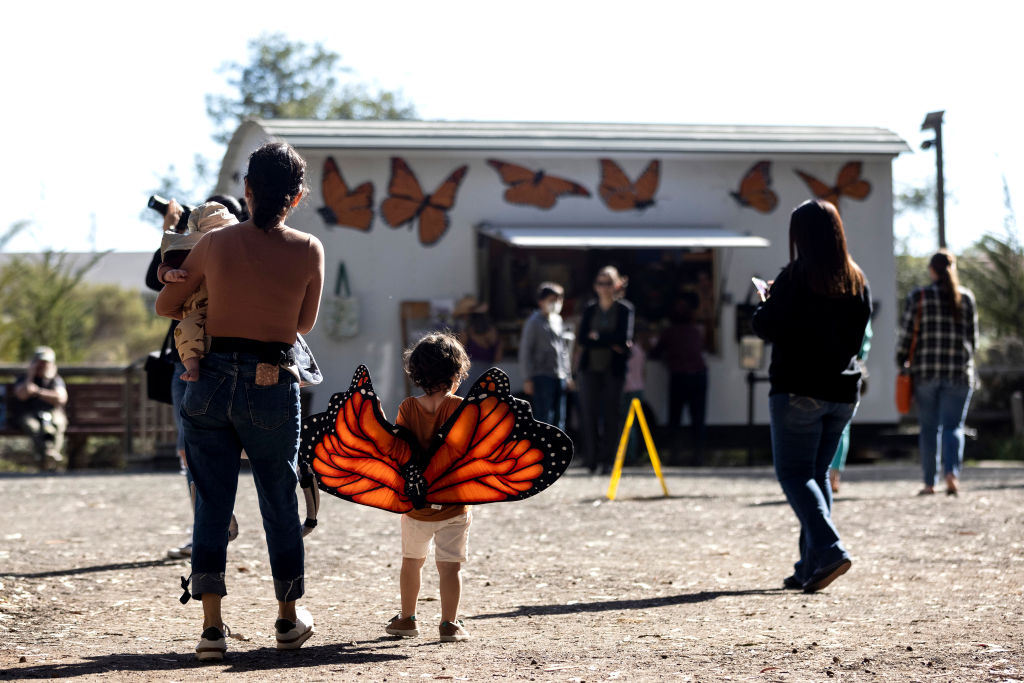
In the depths of the Californian winter, an ember of hope has flickered for the monarch butterfly, the charismatic and beloved visitor that has seemingly been on a graceful descent into oblivion.
The annual mass migration of the orange and black butterflies to the coast of California, as well as a separate odyssey the creatures take each year to the mountains of central Mexico, is among the grandest of spectacles in the natural world. Images of butterflies adorn t-shirts, pottery, and confectionery sold at tourist hotspots that have sprouted up in places where the butterflies gather in such numbers that they cause the boughs of trees to sag.
But the gatherings are becoming more spotty. In the 1980s, the monarch horde in California could be estimated to be four or five million strong. Recent years have seen a worrying slide in numbers in recent years. In 2020, a sobering nadir was reached—fewer than 2,000 monarchs were counted in sites along the California coast, barely 1% of the historical norm.
The last year however, has seen something of a revival. A three-week count around Thanksgiving tallied nearly 250,000 monarch butterflies, with previous strongholds around Santa Cruz and Monterey again teeming with monarchs. It’s unclear what happened – some researchers point to a burst of favorable weather, others to problems in the count.. “We were ecstatic but also thought ‘wow what is going on?’” said Emma Pelton, senior conservation biologist at the Xerces Society, a group that has conducted monarch surveys since 1997. “It has led to some optimism, although it is cautious optimism.”
Despite being the weight of a raisin, the monarch butterfly is capable of traversing 3,000 miles in search of favorable overwintering conditions. The California population arrives in October or November, blanketing trees in groves dotted along the coast until February when the butterflies will lay eggs on milkweed plants, the species’ only food source. The eggs become caterpillars that munch their way through the milkweed, morph into butterflies and then, in a relay over four or five generations, head back north as far as Canada.
Read more: Saving the Monarchs
But this blur of color, a previously reliable sweep of nature that regularly delights people who see the monarchs stop off in their backyards, has been winnowed away by the same maladies that have been blamed for stunning declines in insect populations recorded in German nature reserves to the rainforest of Puerto Rico to the rolling plains of Ohio.
Prime habitat has been bulldozed or plowed over for monocultural fields of crops, highways, and urban sprawl. Crops and lawns have been doused in deadly insecticides. And climate change is ratcheting up temperatures to a level too feverish for many insects, including butterflies, to bear. “We really are making life as hard as possible for insects right now,” said John Tooker, an entomologist at Penn State University.
While monarch numbers can fluctuate wildly from year to year, the long-term trend is clear and a 2021 uptick can only provoke muted jubilation. “One slightly better year isn’t a recovery – we are still down 95% and the long-term outlook isn’t great,” said Pelton. “We haven’t addressed the root causes of the declines.”

Monarchs may already, Pelton suspects, be subject to what’s known as shifting baseline syndrome among people—250,000 butterflies feels like a lot now, but it would be considered an average number five years ago and a wretchedly minuscule total at the dawn of this century.
California is in the grip of its worst drought in 1,200 years and this dryness, along with the rising temperatures, is disastrous for monarch butterflies, according to Chip Taylor, founder of Monarch Watch, a nonprofit that aims to conserve the species. “They don’t do well in the heat, they just sort of hunker down in the mountains,” he said.
“They need nectar and carbohydrates and that food source dries up when it gets hot and dry. Their reproductive output just stops. The temperature increases we are seeing in the U.S. West are just outrageous. If you want monarchs, make it cooler. On our current path, we will just see fewer and fewer of them.”
Some dispute the idea that climate change is the primary threat—Pelton is more critical of habitat loss, including the razing of the monarch’s favored eucalypt trees for coastal properties or to reduce wildfire risk. Despite the butterfly’s bad odds, the monarch’s appreciation community is fully mobilized to give the insect a fighting chance. Hundreds of volunteers eagerly spend hours of their time counting the butterflies for surveys or acting as docents for curious tourists. Many thousands more across the U.S. are involved in planting milkweed in every cranny they can find (there are three main types of milkweed as well as tropical milkweed, which can spread disease to the animals and is now discouraged) or even breeding monarchs at home in an attempt to bolster numbers.
Such devotion to an insect is unusual. Of the million species of insect known to science, there are few that have the love and attention the monarch gets.
“They are the panda of the bug world, a sort of charismatic microfauna,” said Pelton. “They are easy to recognize and they have this really special migration that holds a lot of power for people.
“I’m floored by how many people reach out to us to share their enthusiasm and love for monarchs,” she added. “We hope that can help them to think more holistically about insects in general, even people who don’t think about themselves as bug people.”
There are numerous groups of monarch enthusiasts working to restore habitat, to give these beloved flutterers a chance in the face of vast odds. Monarch Watch has distributed one million milkweed plants in the past decade and helped create thousands of monarch ‘way stations’ – patches of wildflowers and milkweed in schools, businesses and roadsides – to provide oases of food and shelter for creatures hemmed in by barren farmland and poison.
The task is unending, however, and the pressures on monarchs risk spiraling beyond any sort of remediation. Taylor estimates that conservation groups have to restore two million acres of habitat each year just to keep pace with the amount of land being chewed up by agriculture and suburbia. “It’s like the Red Queen in Alice in Wonderland where you have to run fast just to stay still,” he said. “That’s the absurd and demoralizing situation we are in.”

Monarch conservationists fear the creatures may dwindle to the extent they give up the migration and just huddle in sad, tiny groups along the coast. The awesome ripple of movement, a pulsating wave of life that stirs and swirls around the trees like an orange and black-hued dream, may become just another fading memory of the past.
While it’s too soon to tell if the limited revival of the monarch is a sign of a longer-lasting comeback, butterfly enthusiasts say they’ll go on fighting. “You can give up or you can try to somehow fight back,” said Taylor. “That’s all we can try to do.”
The task may seem hopeless, but the secret of insects’ 400 million year tenure on Earth has been a certain tenaciousness. They have navigated through five mass extinctions, outlived the dinosaurs and will probably outlast us. They now face their greatest ever challenge, and their numbers and composition are already undergoing radical change, but they are still the experts in clinging onto the most threadbare of lifelines.
As the ecologist Roel van Klink puts it, insects’ situation is a little like a log floating on water with us pressing our foot down on it. If we just ease off a little bit, it can bob back up again. The conservationists planting milkweed and breeding butterflies and dutifully protecting their tree groves may just give the monarchs the breathing room to carry on, even in diminished form. If we can add further amelioration by acting quickly on climate change and curbing our addiction to noxious pesticides, the great monarch migration need not be a thing of the past.
The surging devotion to monarchs could blossom into something greater still, a true appreciation of how vitally important insects are in underpinning life on this planet, including our own. Bees and flies pollinate a third of the food we eat. Without tiny midges we’d have no chocolate. Even cockroaches, blowflies and other disliked insects help ensure we have healthy forests and a landscape not covered in feces and corpses. Just as many of us are rallying to monarchs in their time of need, perhaps we could do the same for insects writ large.

Oliver Milman is the author of The Insect Crisis: The Fall of the Tiny Empires that Run the World, available now from W. W. Norton.
More Must-Reads From TIME
- The 100 Most Influential People of 2024
- The Revolution of Yulia Navalnaya
- 6 Compliments That Land Every Time
- What's the Deal With the Bitcoin Halving?
- If You're Dating Right Now , You're Brave: Column
- The AI That Could Heal a Divided Internet
- Fallout Is a Brilliant Model for the Future of Video Game Adaptations
- Want Weekly Recs on What to Watch, Read, and More? Sign Up for Worth Your Time
Contact us at letters@time.com